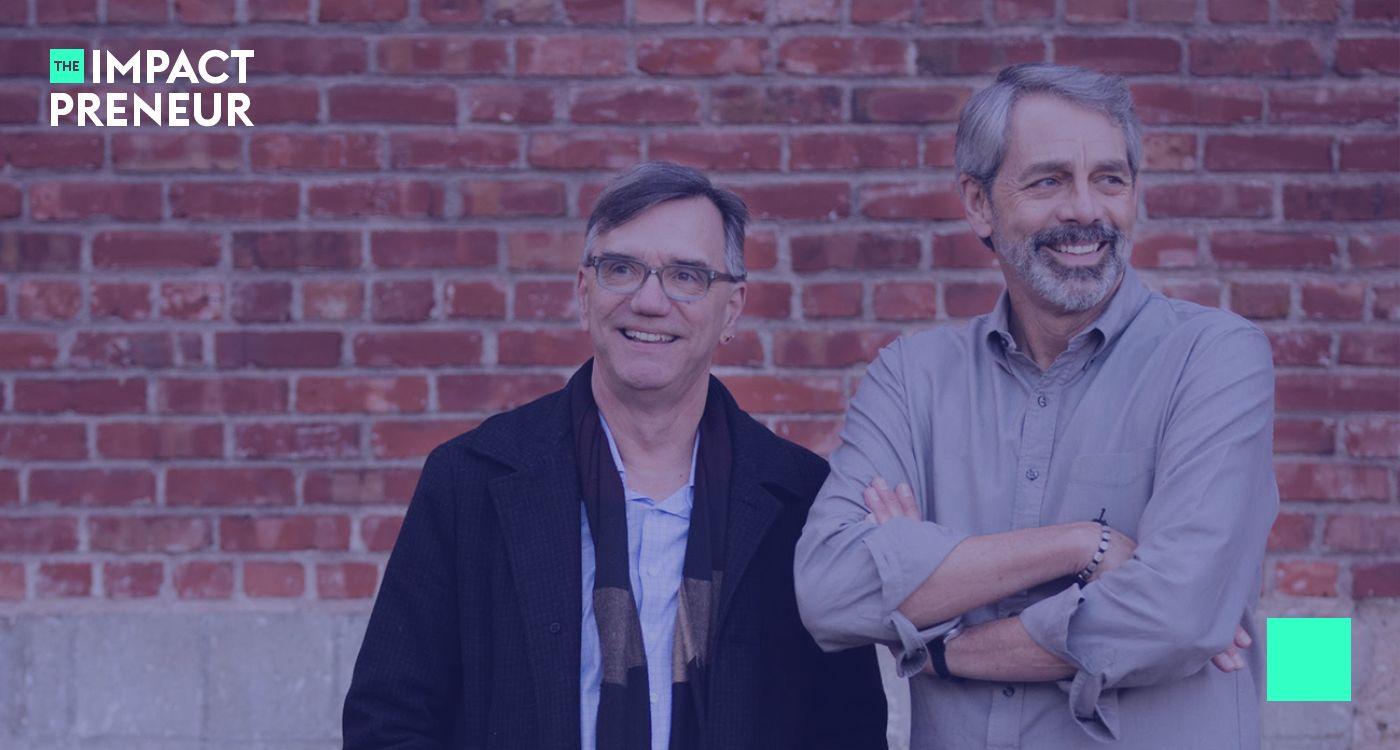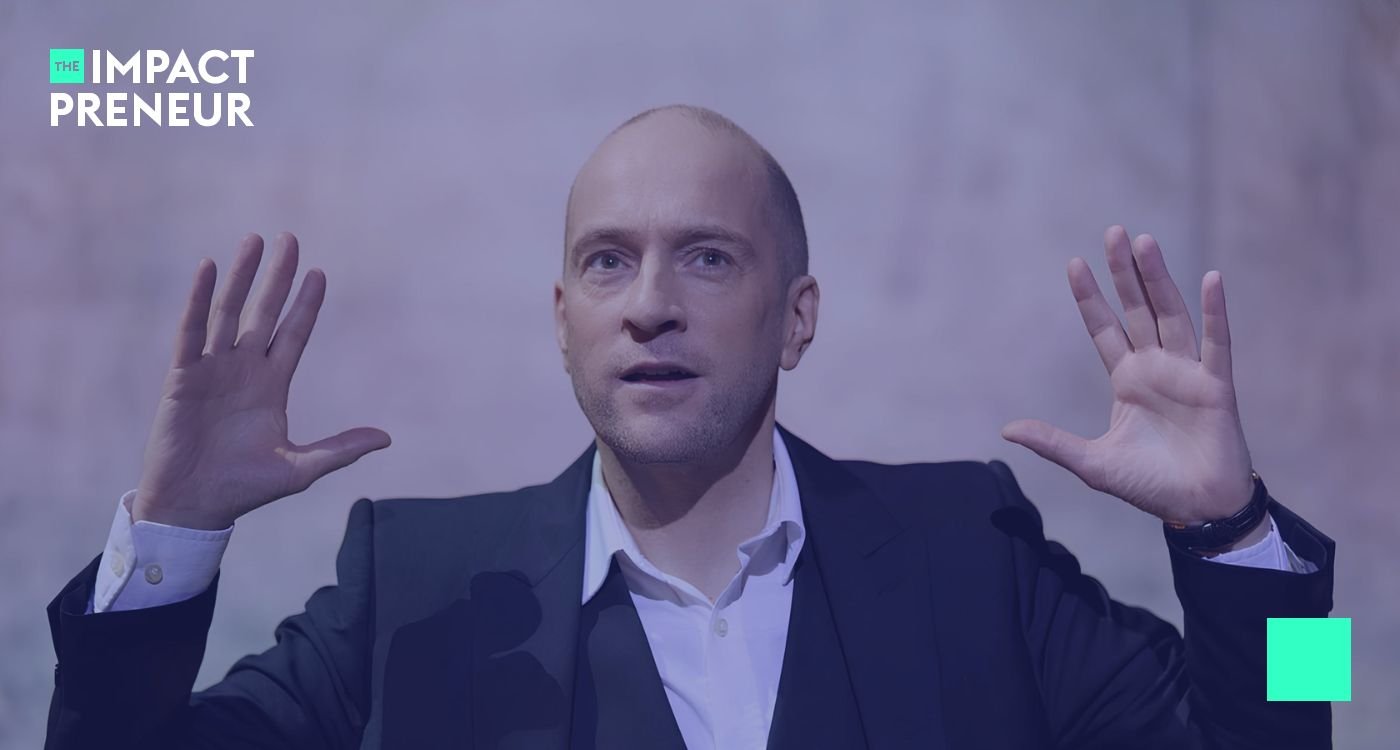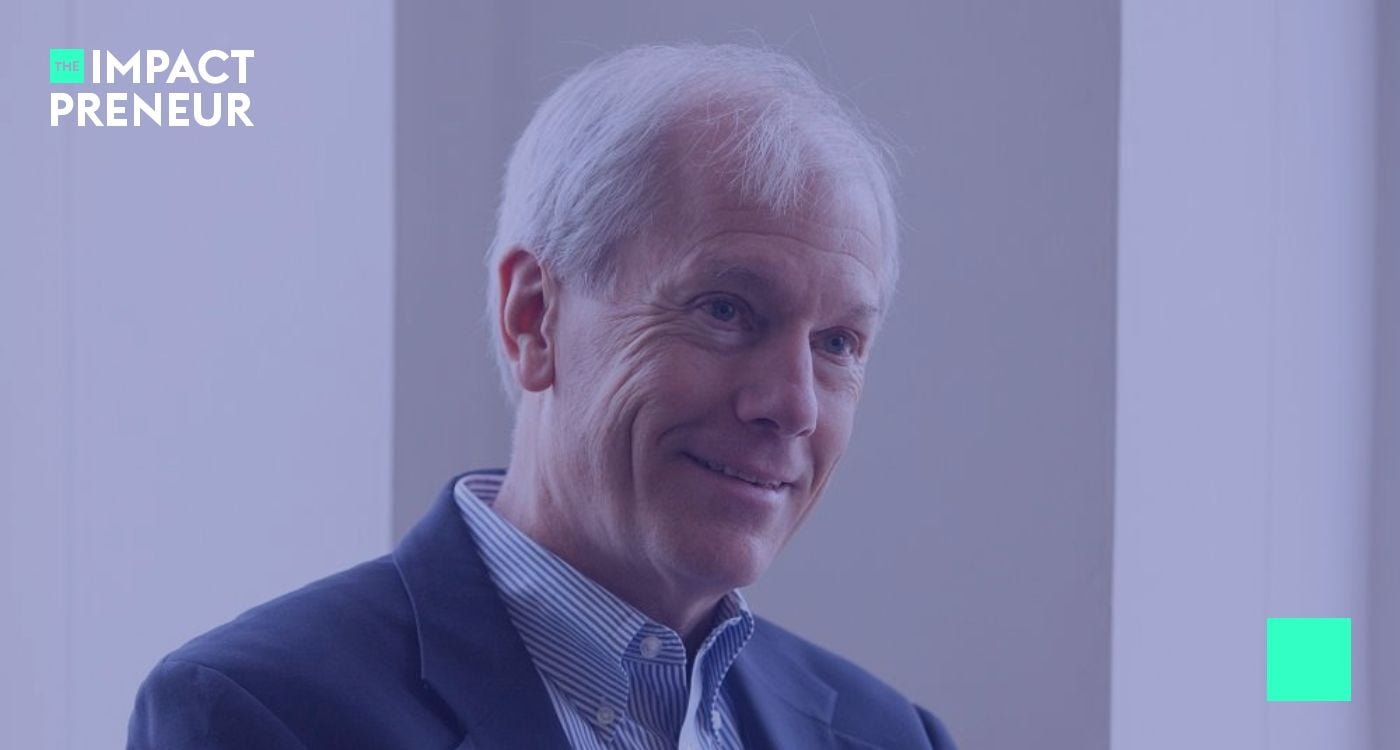Photo: Bill Burnett & Dave Evans | Source: CreativeLive
Ever felt like life's handing you lemons but forgot the recipe for lemonade? Here's a thought: What if you could redesign your life, just like tweaking a recipe until it's just right? Enter the world of design thinking, a creative strategy not just for products, but for crafting the life you've always dreamed of. Here's the scoop: You're the artist, and your life is the canvas. Let's ditch the idea of a single passion, challenge the timeline society has imposed on us, and embrace the multitude of vibrant possibilities that lie ahead.
Bill Burnett, a seasoned designer and educator, alongside Dave Evans, co-founded the Life Design Lab at Stanford University. Their mission? To apply the principles of design thinking to the wicked problem of designing your life. In Burnett's words, "The most interesting design problem is your life."
Quick Bites:
- Curiosity is your compass: Navigate the maze of life with an open heart and mind.
- Reframe to gain: Turn obstacles into stepping stones with a shift in perspective.
- Prototype your palate: Taste-test life's menu with bite-sized experiments.
- Bold choices, bold flavors: Choose your ingredients wisely and savor the journey.
The Power of Curiosity and Reframing
Bill shares, "I've been in office hours for a long, long time with my students... and we notice that people get stuck. People really get stuck and then they don't know what to do and they don't seem to have any tools for getting unstuck."
Curiosity didn't just kill the cat; it gave it nine lives. Imagine viewing your life's challenges not as dead ends but as design problems waiting for innovative solutions. Bill Burnett and Dave Evans spearhead this approach at Stanford's Life Design Lab, where the mantra is to grow into your next adventure rather than settling into societal expectations. This mindset shift is liberating, allowing for a life filled with exploration and discovery.
Picture society's one-size-fits-all success recipe. Now, toss it out! Why? Because your life's menu is yours to create. Curiosity isn't just about asking questions; it's about embracing the mess, the unknown, and the thrill of discovery. It's the spice that makes life exciting.
But what about when things go south? That's where reframing comes in. It's like looking at a burnt cake and thinking, "Hello, homemade croutons!" Suddenly, what seemed like a disaster is an unexpected delight. It's not just optimism; it's creative problem-solving.
Debunking Life's Myths with Design Thinking
Tick-tock, tick-tock. Hear that? It's the life clock, pressuring you to have it all figured out. But here's a thought: What if there's no timer? What if the notion that you're running late to your own life party is just a societal fairy tale? Bill's philosophy offers a liberating truth – you're right on time, no matter where you are in your journey.
Passion pressure? Pfft. The idea that we must find our one true calling is like saying you can only ever like one flavor of ice cream. Boring! Not only is this unrealistic, but it also overlooks the beauty of human complexity. Life's a sundae bar, with an endless combo of flavors to explore.
"The quest for a singular passion can overshadow the rich tapestry of interests that make up our identities," Burnett points out.
Then there's the "best version of yourself" myth. It's like chasing a mirage. This narrative can make us feel like we're falling behind in an invisible race. But who set the track? Who says there's a finish line? Why aim for a single best when life offers a smorgasbord of "betters"?
Bill reflects on a profound insight, "The unattainable best is the enemy of all the available betters, because there are many, many versions of you that you could play out, all of which would result in a well-designed life."
Life isn't a race; it's a journey. There's no universal roadmap because each path is unique. It's about finding joy in exploration, not stress in the expectation. The idea that we must constantly strive for a singular, ultimate version of ourselves can be exhausting and unrealistic. Instead, embracing multiple "better versions" of ourselves can lead to a richer, more fulfilling life.
Designing Your Life with Prototypes
Here's where it gets juicy. Imagine life as a series of taste tests. That's prototyping. Imagine if, instead of making a leap of faith into the unknown, you could take a series of small steps, testing the waters as you go? This is the essence of prototyping in design thinking. Want to change careers? Volunteer in your desired field first. Dream of moving to a new city? Spend a few weeks there. Each experiment is a draft of your future, offering insights without the full commitment.
The brilliance of prototyping lies in its simplicity and effectiveness. It's about asking, "What would it be like if...?" and then taking small, actionable steps to find out. These mini-experiments can illuminate our true desires, challenge our assumptions, and reveal new possibilities we hadn't considered. It's a strategy that encourages action, learning, and iteration.
And why stop at one prototype? Bill advocates for creating three distinct life plans – not as a way to hedge your bets but to expand your vision of what's possible. This trinity of plans serves as a creative exercise to stretch your imagination and explore various facets of your potential. It's like having multiple drafts of a novel, each with a different ending. The process not only uncovers alternative paths but also empowers you to make informed choices about which draft of your life you want to pursue.
Bill invites us to consider, "Great, there's more lives than one in you. So let's go on an odyssey, and let's really figure out those lives!" This invitation to ideate multiple futures underscores the boundless creativity at our disposal when designing our lives.
Each prototype, each plan, is a chapter in your life's storybook. Some chapters may be short stories, others epic novels, but all contribute to the rich narrative of a life well-designed. This approach doesn't just prepare us for the future; it actively shapes it through intentional choices and deliberate actions.
Making Choices That Stick
Decision-making. Paralyzing, right? But here's a liberating truth: Just pick something. What if making a choice, any choice, is better than standing still? The magic isn't in the choosing; it's in the commitment. Once you've prototyped and pondered, it's time to pick a path and walk it with confidence.
This doesn't mean choices are always permanent. Life is fluid, and decisions can evolve. However, the act of choosing is empowering. It's a declaration of intent, a step towards a future you've designed. And once a decision is made, embracing it fully can transform doubt into determination. Sure, you might glance at other tables with a hint of envy, but remember, your plate is full of goodies you've chosen for yourself.
The art of choice also involves letting go of the alternatives, at least for now. This practice doesn't just simplify our lives; it enhances our satisfaction with the choices we make. It's akin to decluttering your home, where each item you keep has a purpose and a place. The same principle applies to life decisions. By focusing on our chosen path, we can invest our energy and emotions more fully, enriching our journey.
Bill shares a key insight, "If you make decisions reversible, your chance of being happy goes down like 60 or 70 percent." This perspective on commitment and contentment illuminates the paradox of choice, emphasizing the value of decisiveness in designing a joyful life.
Actionable Steps for a Well-Designed Life:
Ready to draft your own blueprint for a fulfilling life? Here's how to start:
- Embrace Curiosity: Let it simmer. Explore, ask, taste, and savor.
- Reframe Challenges: Burnt edges? No problem. That's just added flavor. Shift your perspective to see opportunities for growth.
- Prototype Generously: Small bites. Big dreams. Keep tasting until it's just right.
- Choose Boldly: Make your decision, commit to it. Make your meal and enjoy every bite.
Designing your life isn't a one-time project; it's an ongoing process of iteration, learning, and growth. It's about enjoying the process, burns and all. It's a journey of curiosity, creativity, and countless taste tests. So, what are you waiting for? Get curious, talk to people, try stuff, and watch as the design of your life unfolds in the most unexpected and delightful ways.
Questions on the Topic
Q: How can I discover what I truly want to grow into?
A: Ever feel stuck on the "What do I want to be when I grow up?" merry-go-round? Well, it's time to hop off and think differently. We're talking about growing into something new and exciting. This isn't about losing that spark of curiosity; it's about letting your life unfold in ways that surprise and delight you. It's about embracing a multitude of possibilities and exploring what makes your heart sing. Remember, it's not a one-and-done deal; it's an ever-evolving journey.
Q: Why should I reframe how I view problems in my life?
A: Reframing problems is like turning the kaleidoscope of your life to reveal new patterns and opportunities. Sometimes, we're so fixated on a "problem" that we miss the forest for the trees. By asking, "Am I even solving the right problem?" you open the door to solutions you never imagined. It's about getting unstuck by seeing your challenges in a new light. And who knows? The answer might just be waiting for you around the corner, disguised as a question you haven't asked yet.
Q: Why should I design multiple life plans?
A: Imagine you've got not just one, but several exciting lives to choose from. Sounds thrilling, right? That's the beauty of designing multiple life plans. It's about acknowledging that you're a multifaceted being with a plethora of paths to explore. Whether it's continuing your current journey, pivoting because your job got robotized, or pursuing a wild-card dream, the idea is to sketch out diverse scenarios. This process doesn't just open up your imagination; it brings clarity and action to your wildest aspirations.
Q: What's the secret to making great life choices?
A: Here's the thing: making great life choices isn't just about weighing pros and cons on a spreadsheet. It's about listening to your gut, engaging your heart, and using your head. It's about gathering options, narrowing them down, and then going for it with all you've got. And once you've made your choice? Embrace it. The beauty of life design is in the learning, the experimenting, and the joy of finding paths that lead to a well-lived and joyful life.




